——— B ———
B – (1) Abbreviation for byte. (2) The symbol for susceptance. (3) Abbreviation for the right channel of a stereo signal. Also called the R channel. See also L and A.
b – abbreviation for bit.
B+ – the high-voltage supply in a vacuum tube amplifier. The name is a holdover from the days when batteries were used to operate radios. The “A” battery supplied power the tube filaments, the “B” battery supplied power for the plate of the tube, and the “C” battery supplied power for the bias, and sometimes a “D” battery supplied power to the screen grids. The designations remained when radios switched over to rectified ac power supplies.
B-3 – see Hammond B-3.
BACCH® – a trademark of Princeton physics professor Edgar Choueiri for a process for reproducing binaural audio with loudspeakers (BACCH-SP), in 3D (BACCH-3D), and with headphones (BACCH-HP).
backbeat – a heavy emphasis on the second and fourth beats of a measure in 4/4 time, typical of rock music.
back coating – a material thinly applied to the back side (non-oxide side) of magnetic recording tape to reduce slippage between tape layers, prevent accumulation of static charges, and minimize curling or wrinkling. See also sticky-shed syndrome.
back EMF – Back ElectroMotive Force.
back electret microphone – see electret condenser microphone.
back electromotive force – the voltage that pushes against the current which induces it. In a loudspeaker system, this phenomenon can cause distortion if not properly controlled. Also called counter-electromotive force. Abbreviated CEMF, counter EMF, or back EMF.
backfill editing – a film editing technique in which ambient sound is adjusted or added to the background of dialog to match that of other dialog in the same scene.
background masking – see temporal masking.
background music – (1) Music played as an unobtrusive accompaniment to an activity such as dining in a restaurant, shopping in a mall, or riding in an elevator. Often called elevator music as a derisive slang term. Compare with foreground music. (2) Music composed to accompany and enhance the mood of a movie or television production. Also called a film score, score, underscore, or soundtrack music.
background noise – (1) The ambient noises that are present in a scene or location, such as wind, water, crowds, and traffic. Also called ambient audio, ambient noise, ambience, atmosphere, atmos, environmental sound, or background sounds. (2) Inherent noise in an audio device. (3) Extraneous noise that contaminates sound measurements and that cannot be separated from the desired signal. (4) Surface noise produced by the friction of the stylus of a record player moving through the groove of a record. (5) The hiss inherent in magnetic recording tape.
background singer – see backing vocals.
background sounds – see background noise.
background vocals – see backing vocals.
backing – (1) Musical instrumentation that accompanies a vocalist. See also backing vocals. (2) Short for backing film, the tape base used in magnetic recording tape.
backing film – see tape base.
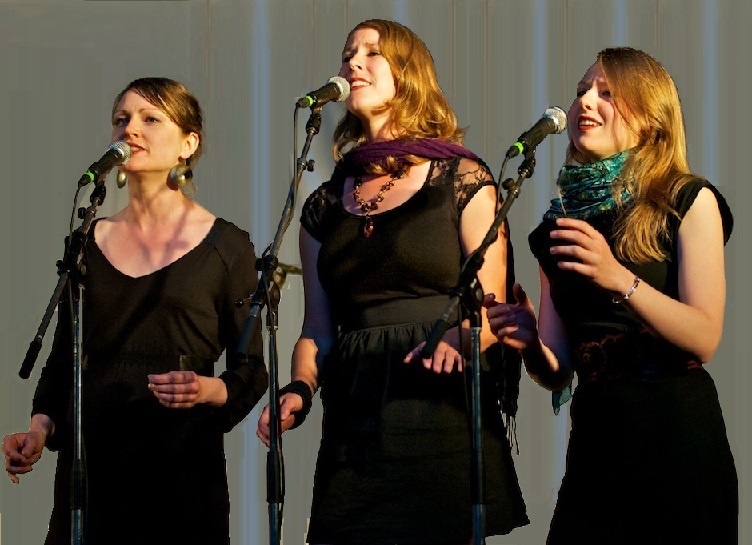
backing track – prerecorded accompaniment used by a singer or other musician during a performance that is in addition to or in place of other performers. Sometimes called a performance track or public appearance track.
backing vocals – singing that provides fills or harmonizes with the lead vocalist. Backing vocals can be sung by a singer, group of singers, or the lead vocalist. Also called backup vocals, backup singers, background vocals, and background singers.
backline – originally, the line of amplifiers, speakers, and combo amps set up along the back of the stage at a live musical performance. Now the term is used to mean all of the on-stage equipment used by the artists, including amp/speakers, instruments, keyboards, etc.
back of house (BOH) – see front of house.
back phrasing – singing either ahead or behind the beat, usually for dramatic effect.
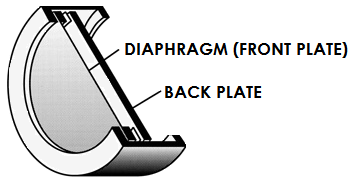
Capsule
back plate – the fixed element in the capacitor of a condenser microphone that has an electric charge with an opposite polarity to that of the diaphragm. Called a plate for short.
back electret condenser microphone – see electret condenser microphone.
back surround speakers – see rear surround speakers. Sometimes called back speakers.
back timing – a technique of cueing up music and/or sound effects so that they end at a specified time or at the same time as the narration.
back up – to make a copy of data or recorded music to safeguard against unexpected loss or damage.
backup – (1) A copy made of data or recorded music to safeguard against unexpected loss or damage. (2) A vocalist that sings behind the lead vocalist.
backup singer – see backing vocals. Sometimes spelled back up singer.
backup vocals – see backing vocals. Sometimes spelled back up vocals.
backward masking – a form of temporal masking in which an earlier arriving sound is masked by a later, louder sound. The effect occurs for periods of less than 500 ms and for sound differences of greater than 10 dB.
backwards echo – see reverse echo.
BAC&S – British Academy of Composers and Songwriters. See British Academy of Songwriters, Composers, and Authors.
BAD™ – Binary Amplitude Diffsorbor. A trademark owned by RPG for their acoustic panels consisting of a 2D phase grating (a patented hardboard with a very specific pattern that provides diffusion) combined with a fiberglass core. They are designed so they can be covered with acoustically transparent fabric to be easily blended with interior decoration. They are available in both a flat version and a curved version (BAD Arc). The curvature increase diffusion and panel effectiveness. See also reflection phase grating) (RPG).
badge – a manufacturer's logo placed on the front of a microphone, instrument, or other gear.
baffle – (1) The surface or structure in a speaker cabinet on which the speaker drivers are mounted to prevent the front and rear sound waves from interfering with one another causing cancellation. (2) A sound-absorbent barrier used in a recording studio to separate the sound of musicians playing the same room. Sometimes called a gobo. (3) A device used to inhibit sound propagation, usually suspended vertically from a ceiling to reduce reverberation time. (4) A device that simulates the shape of a human head around which microphones are mounted when using a baffled-microphone technique.
baffled-microphone – a category of stereo microphone techniques that uses a device such as a baffle, disc, wedge, or sphere to simulate the effect of a human head around which microphones are mounted. The main techniques using this method are the baffled-omni pair, Jecklin disc technique, Schneider disc technique, wedge technique and sphere microphone. Also called baffled stereo.
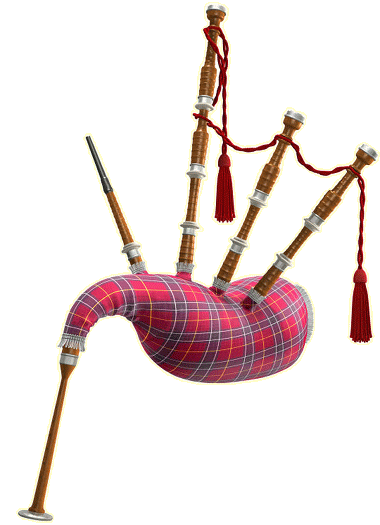
baffled-omni pair – a stereo microphone technique using two omnidirectional condenser microphones spaced approximately 6 inches (15 cm) apart (simulating ear spacing) separated by a hard or padded baffle. The stereo image is created by time differences at low frequencies (the spacing between the mics) and level differences at high frequencies (caused by the sound shadow created by the baffle). The baffled omni pair is in the baffled-microphone category. Other techniques in this category include Jecklin disc technique, Schneider disc technique, wedge technique, and sphere microphone.
baffled stereo – see baffled-microphone.
bagpipe – a musical instrument consisting of several pipes containing reeds that are sounded by air pressure from a bag filled by the player blowing into the bag and squeezed by the arm. Often used in plural as bagpipes. Bagpipes are used for folk music in Scotland, Ireland, France, and other countries.
BAH – Binaural Audio through Headphones.
bajo quinto – see bajo sexto.
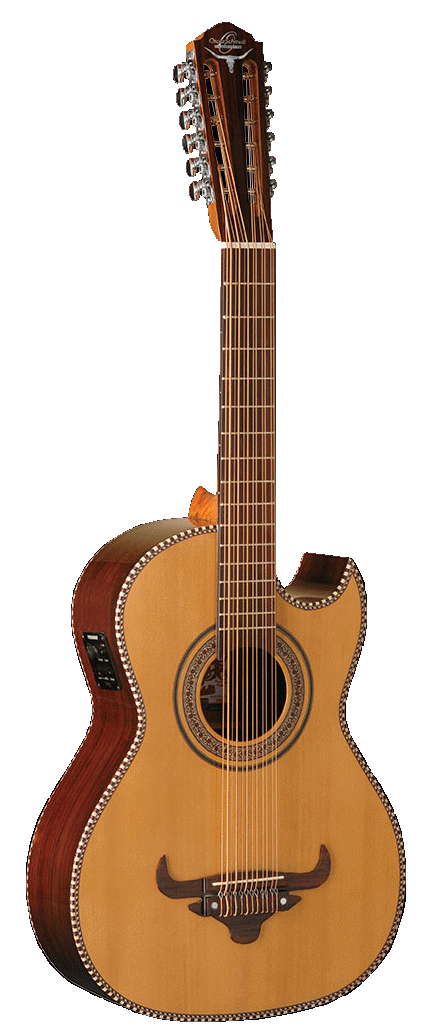
bajo sexto – a musical instrument in the guitar family that appears similar to a 12-string guitar, having 12 strings in 6 double courses, but with a deeper body and a shorter neck. It is commonly used in Mexican conjunto and Tejano music. The instrument is tuned an octave lower than the guitar. However, because the body on some instruments do not resonate well on the the lowest string, some players began removing the sixth course. As a result manufacturers began producing a 10-string, five-course instrument, which is called a bajo quinto. Bajo sexto is Spanish for sixth bass while bajo quinto means fifth bass.
baking – a slang term for the process of heating old magnetic recording tapes suffering from sticky-shed syndrome to reduce moisture and minimize shedding of the magnetic coating. Tapes should be heated at 130°F ±10° for up to 6 hours (¼" tapes) or up to 10 hours (2" tapes) in an temperature-controlled electric oven (not a kitchen oven and not a gas oven). Tapes should be allowed to cool to room temperature before removing. Baking can be destructive, and it is recommended that it be done by a professional restorer or technician. Baking is only a temporary fix, but it allows normal playback for weeks or months before the tape reverts and becomes unplayable again, which allows time to transfer the recording to a stable format. Acetate tapes, tapes exhibiting lubricant loss (white residue), and cassettes should not be baked. A less risky, but far slower method of hydrolysis reversal, is placing the tape in a low humidity environment and wait for the effects of hydrolysis to recede. This could take weeks or months.
BAL – Binaural Audio through Loudspeakers.
balance – (1) The relative volume levels between tracks or instruments. (2) The relative volume level between left and right channels of a stereo audio track. (3) To adjust the relative volume levels between tracks or instruments. (4) To even out the relative levels between the left and right channels of a stereo recording.
balance control – a control found on both consumer and professional audio stereo equipment used to vary the volume of one channel relative to the other while keeping the overall volume relatively constant.
balanced – refers to inputs, outputs, equipment, and other devices that are connected using balanced circuit.
balanced audio – audio equipment and devices that are connected using balanced lines. Balanced connections are important in sound recording and production because they allow the use of long cables while minimizing the susceptibility to external noise. Also called balanced equipment.
balanced cable – see balanced circuit.
balanced circuit – a two-conductor circuit in which both conductors and all circuits connected to them have the same impedance with respect to ground and to all other conductors, with the purpose of having the noise pickup equal in both conductors, making it a common-mode signal so that any noise that is present is canceled. A balanced cable consists of two conductors (usually a twisted pair) surrounded by a shield, which is usually connected to ground, covered by an insulated jacket. The impedances with respect to ground of the two conductors is what makes it balanced or unbalanced. With an unbalanced circuit, one line is grounded, making the impedance zero, while a balanced circuit has two lines with equal impedance. Balanced circuits allow the use of long cables while minimizing the susceptibility to external noise. Note: Balanced circuits are sometimes incorrectly defined as a two-conductor circuit with one conductor carrying the signal and the other conductor carrying an equal signal with reverse polarity, so that noise picked up by one conductor is canceled by the noise of the conductor with the opposite polarity. However, the signals are not always equal and signal symmetry is not necessary for noise rejection.1 (See balanced output for further explanation.) Also called a balanced cable, balanced wiring, balanced line, balanced connection, or balanced interface. See also XLR, ground-compensated output, and differential signaling.
balanced connection – see balanced circuit.
balanced equipment – see balanced audio.
balanced interface – see balanced circuit.
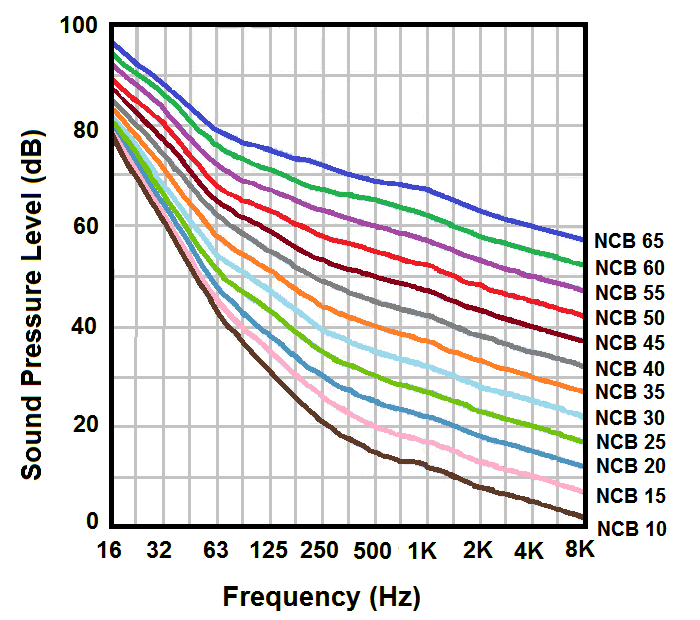
balanced input – an input where the signal consists of the difference in voltage between the two leads, neither of which is common to the circuit ground. Balanced
input circuits offer excellent rejection of common-mode noise that may be induced into the line. See also balanced circuit and balanced output.
balanced line – see balanced circuit.
balanced noise criteria (NCB) – a system for rating noise in a space, defined as the range of audibility (the ANSI threshold of audibility for pure-tones) for continuous sound in a specified field from 16 Hz to 8000 Hz. It is similar to the noise criteria (NC), but uses steeper slopes at high frequencies (meaning lower acceptable levels) and uses additional octave bands down to 16 Hz. See also noise rating (NR) and room criteria (RC).
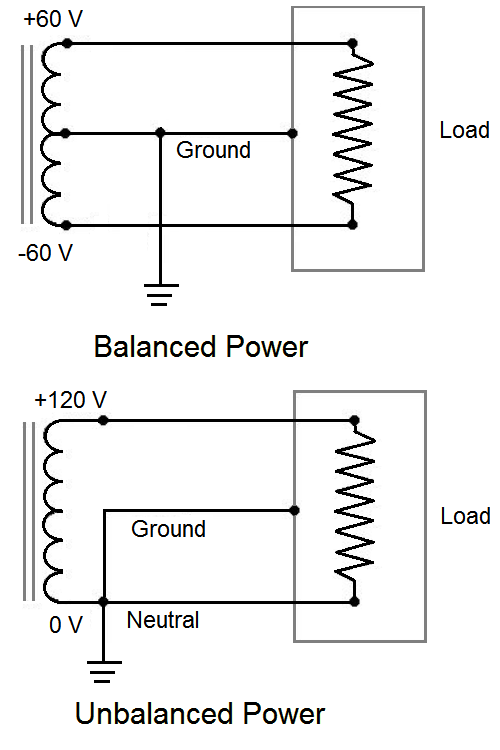
balanced output – an output where the signal consists of the difference in voltage between the two leads. There are three types of balanced outputs: (a) active balanced, in which the device actively drives both the hot and cold outputs, with the cold output being an inverted version of the hot signal. This creates symmetrical signals between the hot and cold outputs, which is known as a symmetrical balanced output. (b) impedance balanced, in which the device actively drives only the hot output. The cold output is tied to ground through a resistor that matches (or balances) the output impedance of the signal conductor. Rejection of common-mode noise is maintained since the impedance is balanced between the two conductors. (c) transformer balanced, in which the device actively drives the primary winding of the output transformer, with the secondary winding of the output transformer providing a symmetrical signal to the hot and cold signal conductors. See also balanced circuit, balanced input, and ground-compensated output.

balanced power – ac power supplied by a center-tapped power transformer so that one side of the circuit has +60 volts to ground while the other has -60 volts to ground, but still has the usual 120 volts across the circuit. (In countries with 220-volt power, the voltage is +110 and -110 volts.) The purpose is to cancel any hum or noise on the system. In a normal 120-volt system, the hot leg is +120 volts while the neutral leg is at or nearly at ground potential.
balanced-to-unbalanced converter – see isolation box, definition #2.
balanced-to-unbalanced transformer – see isolation box, definition #2.
balanced/unbalanced converter – see isolation box, definition #2.
balanced/unbalanced transformer – see isolation box, definition #2.
balanced wiring – see balanced circuit.
ball boundary microphone – a surround sound microphone technique consisting of two bidrectional (figure-eight) microphones placed on each side of a sphere microphone facing the front. The various channels are derived as follows: L = L-sphere + L-bidrectional, R = R-sphere + R-bidrectional, LS=L-sphere - L-bidrectional, and RS = R-sphere - R-bidrectional.
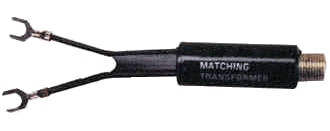
balun – short for balanced-unbalanced. A slang term for a balanced-to-unbalanced transformer, used for a variety of interfaces such as a transformer between balanced and unbalanced lines or an impedance transformer between a 300-ohm balanced and 75-ohm unbalanced cable. See also isolation box, definition #2.
banana jack – the female socket for the single-conductor electrical connector banana plug. Also called a binding post.
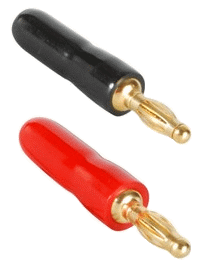
banana plug – a single-conductor electrical connector with a banana-shaped spring-metal tip frequently used on power amplifiers for the speaker connections. Called a GR plug in the UK for General Radio Corporation, the developer of the plug. Sometimes called a binding post connector. See also dual banana plug.
band – (1) A group of musicians that play music together. Sometimes called a combo, music group, or ensemble. (2) A musical group, usually having brass, woodwind, and percussion instruments that march together or play in open-air venues—a marching band. (3) A big band. (4) A dance band. (5) Short for frequency band or radio frequency band. (6) One of several tracks on an album. Also called a cut. (7) The term used for a ruler in some DAWs.
band 71 – a radio frequency band that overs the range of 617 to 698 MHz, which became available for use by mobile phone in 2017. It is divided into seven 10-MHz-wide blocks (A-G), with each block consisting of 5 MHz for uplink and 5 MHz for downlink. As a newer band, it is used exclusively for newer technologies such as LTE. This band has a lower radio frequency than most other bands used for mobile phones, and should provide superior service in rural areas and inside buildings, because lower frequencies travel farther and penetrate solids better than higher frequencies. The band was previously used for UHF TV channels 38 to 51, but with the 2017 incentive auction by the FCC, these TV channels were relocated and this spectrum was sold to mobile network operators.
band elimination filter – see bandstop filter.
BandLab Technologies – an online company founded in 2014 in Singapore that offers online music production services, musical instruments, audio equipment, and accessories. In 2016, BandLab acquired Composr, an music creation and recording app. In 2016, BandLab acquired MONO, a manufacturer of protective bags and cases. That same year, it acquired a 49% stake in Rolling Stone magazine. In 2017, BandLab acquired Cognosonic Pte, Ltd., the developer of AudioStretch, an app that can manipulate non-destructively the playback speed and pitch of music. It acquired chew.tv, a London-based c streaming service for DJs in 2017. In 2018, BandLab acquired the assets of Cakewalk, the developer of SONAR from Gibson.
band-limited signal – (1) A signal that has a limited range of frequencies. (2) Specifically regarding the Nyquist sampling theorem, a signal where the amplitude of its spectrum goes to zero for all frequencies beyond some threshold called the cutoff frequency.
band-limit filter – see bandstop filter.
band-limiting filters – see bandstop filter.
band masking – see frequency masking.
bandpass – the range of frequencies allowed to pass through a filter.
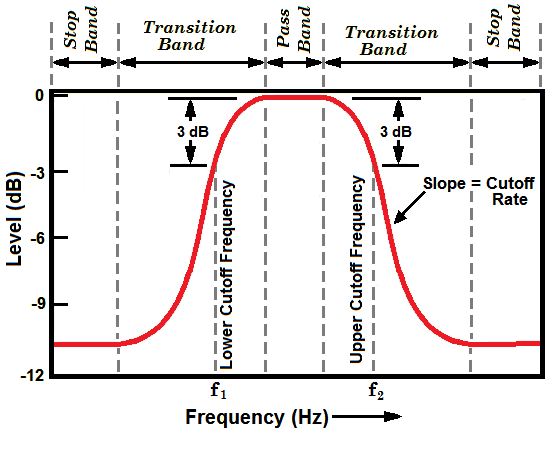
bandpass filter – a device that passes frequencies of a certain range (bandpass) while reducing or rejecting the frequencies outside that range. It is the opposite of a bandstop filter. Such filters usually have three controls: gain, center frequency, and width of the frequency band (called Q, resonance, or bandwidth). A higher Q has a narrower bandwidth to allows more precise control over problem frequencies. A lower Q provides a wider bandwidth and is used for tonal shaping of the audio. Compare with bell filter. Also called a peak filter or peaking filter. Sometimes spelled with the less preferred band-pass filter or band pass filter. See also lowpass filter, highpass filter, bandstop filter, allpass filter, notch filter, and slot filter.
bandreject filter – see bandstop filter.
bandrejection filter – see bandstop filter.
bandstop filter – a filter that passes most frequencies unaltered, but attenuates those within a specific range (the frequencies between the upper and lower cutoff frequencies). It is the opposite of a bandpass filter. A notch filter is a bandstop filter with a narrow stopband (high Q factor). Sometimes spelled with the less preferred band-stop filter or band stop filter. Also called band-limit filter, band elimination filter, band rejection filter, band reject filter, or reject filter. See also lowpass filter, highpass filter, allpass filter, and slot filter.
band track – (1) A mixdown of a song containing only instruments without any vocals. (2) The same as a basic track or rhythm track.
bandwidth (BW) – (1) The amount of digital data that can be transferred by a device, usually measured in bits per second (bps). See also bit rate. (2) The useful range of frequencies that an audio device can reproduce. (3) The range of frequencies affected by an equalization setting, usually indicated as a quality factor (Q). (4) The frequency width of the passband of a filter. (4) The range of frequencies that a radio receiver can receive, such as 88 to 108 MHz for the FM band.
Bang & Olufsen (B&O) – a company headquartered in Struer, Denmark, that designs and manufactures audio products, television sets, and telephones. It was founded in 1925 by Peter Bang and Svend Olufsen.
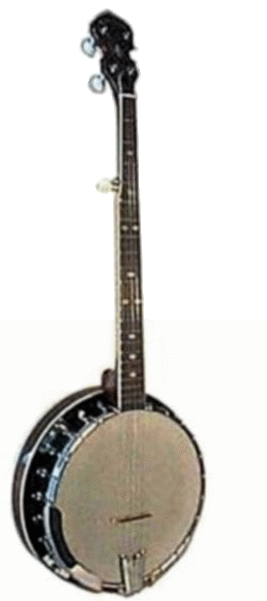
banjo – a four- or five-stringed musical instrument with a long fretted neck and a round open-backed body consisting of parchment or plastic stretched over a metal hoop that is strummed or plucked. It is often used American bluegrass or folk music.
bank – (1) A group of sound patches stored in the library or memory. Also called a wave flank. (2) A group of faders on a control surface that can be switched in and out. For example, if a device has eight physical faders, but a DAW session is using 24 tracks, by switching banks the control surface faders can access tracks 1 to 8, 9 to 16, or 17 to 24. (3) A group of similar objects, such as a bank of switches, a bank of indicators, etc.
bantum jack – see TT.
bar – (1) In music a segment of time defined by a given number of beats as specified by the time signature and indicated by the space between two vertical bars. Also called a measure. (2) A unit of atmospheric pressure, equal to 1,000 millibars, 100 kilopascals, 750.062 torr, 29.53 inches of mercury, or 14.50 psi.
Barco N.V. – a hardware manufacturer headquartered in Kortrijk, Belgium, specializing in digital displays, digital cinema projection, video projectors, image processing, and digital lighting and controls.
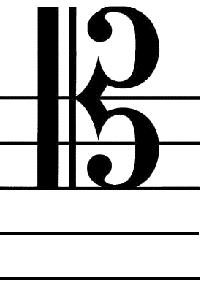
baritone – (1) The second highest vocal range of the adult male voice, usually a range from the second F below middle C to about F above middle C (F2 to F4). (2) The musical range between tenor and bass. (3) A singer whose voice is within this range. (4) A musical instrument that plays within this range. (5) A vocal or instrumental part written in this range.
baritone clef – the symbol on a music staff indicating that the fifth line (top line) on the staff represents the pitch of middle C. One of five C clefs, the baritone clef is mostly obsolete now.
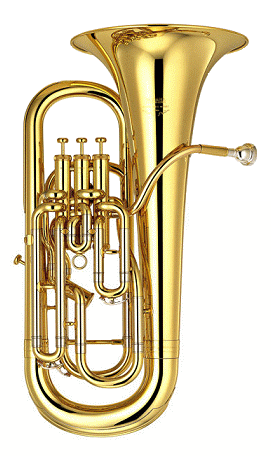
baritone horn – a low-pitched brass instrument, with valves, and a predominantly cylindrical bore like the trumpet, using a large mouthpiece similar to that of the trombone and euphonium. The baritone horn is pitched in B♭ one octave below the B♭ trumpet. Although the baritone horn appears similar to the euphonium with both having a nine-foot-long main tube, the baritone horn has a smaller and more cylindrical bore, a tighter wrap, and a smaller bell. Being smaller and lighter, it produces a lighter sound than the larger, more brassy euphonium.
Barkhausen effect – the tendency of the magnetic particles (domains) on a magnetic recording medium to influence one another, tending to become magnetized in one particular direction as a group rather than individually. This effect causes recording tape to have a graininess in its magnetic composition, which causes tape hiss. Modulation noise, which only occurs when a recorded signal is present, is also caused by the Barkhausen effect, and is sometimes called Barkhausen noise.
Barkhausen noise – see Barkhausen effect.
barometer – an instrument used to measure atmospheric pressure. A barometer consists of a glass tube that is closed at one end, filled with a liquid, usually water or mercury, and an open liquid-filled reservoir at the base. The weight of the liquid creates a vacuum in the top of the tube and the height of the liquid adjusts until the weight of the liquid column equals the atmospheric force exerted on the reservoir. The word barometer comes from the Greek word baros, meaning weight, and the Greek word metron, meaning measure.
barometric pressure – see atmospheric pressure.
barré – a technique of playing a chord on a stringed instrument, such as a guitar, by positioning a finger across the strings at a particular fret. Pronounced “bah-rey.”
barré chord – a type of guitar chord using the barré technique, in which one or more fingers are used to press down multiple strings across the guitar fretboard, enabling the guitarist to play a chord not restricted by the tones of the open strings. The advantage of using barré chords is that you can use the same patterns on almost any fret.
barrel-shaped diffuser – see polycylindrical diffuser.
barrier – see soundproofing or boundary.
barrier miking – a technique of placing a microphone as close to a acoustic reflective surface as possible to prevent phase cancellation. See also boundary microphone.
barrier strip – see terminal strip.
bar signature – see time signature.
BASCA – British Academy of Songwriters, Composers, and Authors.
base – see tape base.
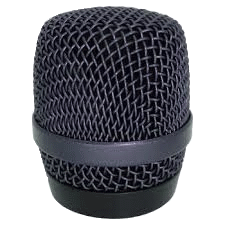
base frequency – the frequency of a crystal oscillator that is typically multiplied to some higher operating frequency for use in transmitters and receivers. Not to be confused with bass frequencies.
basic session – the point usually early in a recording session in which the basic tracks are recorded.
basic tracks – see rhythm tracks.
basket – (1) The woven or perforated metal housing that protects the sensitive parts of a microphone while allowing sound to enter. (2) The frame onto which the cone of a speaker driver is mounted.
bass – (1) The lowest vocal range of the adult male voice, usually a range from the second E below middle C to the E above Middle C (E2 to E4). (2) The musical range below baritone. (3) A singer whose voice is within this range. (4) A musical instrument that plays within this range. (5) A vocal or instrumental part written in this range. (5) The lowest range of the audio spectrum, from about 350 Hz and below. It is sometimes further divided into two to four subdivisions, labeled as deep bass (20 Hz to 40 Hz), low bass (40 Hz to 80 Hz), mid bass (80 Hz to 160 Hz), and upper bass (160 to 350 Hz), although this break down varies from source to source. See also audio spectrum. (6) Low in pitch. (7) A bass guitar. (8) A double bass.
bass amp – short for bass amplifier.
bass amplifier – an amplifier specifically designed for amplifying signals from an electric bass. They come in two main versions: (1) head unit with separate speaker cabinet or (2) combo amp, in which the amp and cabinet are combined. Called a bass amp for short.
bassbin – a subwoofer consisting of one or more drivers enclosed in a horn cabinet, usually designed with very high efficiency to provide higher sound pressure levels for large venues.
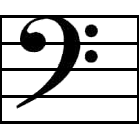
bass clef – the symbol on a music staff indicating that the fourth line from the bottom of a staff represents the pitch of F below middle C. Also called a F clef.
bass drum – a large drum used to produces a low note, either with a definite or indefinite pitch. There are three types of bass drum: (a) the concert bass drum, used with orchestras, ensembles, or concert bands, (b) the pitched bass drum, typically used with marching bands, and (c) the kick drum, struck with a beater attached to a pedal, and used in drum kits.

bass fiddle – see double bass.
bass frequencies – frequencies of about 350 Hz and below.
bass guitar – an electric guitar, typically having four strings, but sometime having five or six strings, used to play bass, usually through an amplifier. Bass guitars can be divided into three classes: (a) long-scale basses, having a scale length of 34"e;, considered the standard size by many, (b) medium-scale basses having a scale length in the range between 31"e; and 33"e;, and (c) short-scale basses, generally having scale lengths of less than 31"e;. At one time, short-scale bases were considered inferior because in the 1960s, the market was flooded by a wave of cheap, poorly built instruments, with inferior electronics, and a hollow sound generally aimed at the student market. In the early 2000s, several higher quality short-scale began to be produced. Despite their smaller size, they have a really large sound with a fat low end unlike long-scale basses. Sometimes called an electric bass or simply a bass.
bass horn – (1) A tuba. (2) An obsolete wind instrument related to the tuba, but shaped like a bassoon, with a cup-shaped mouthpiece.
bass management – a system found in some amplifiers and active monitors that provides the ability to filter out the lowest frequencies in an audio signal and send them to one or more subwoofers instead of the monitors. This can be either the low frequency content of the full audio signal or just the LFE (low frequency effects) channel. Separating the bass frequencies allows the monitors to output a higher sound level, and it provides more flexibility in placement of the monitors to control the acoustical environment.
bassoon – a low-pitched musical instrument in the woodwind family with a double reed and a long wooden body attached to a U-shaped lateral tube that leads to the mouthpiece.

bass reflex – see ported speaker.
bass response – the ability of an instrument or device to reproduce low frequencies, especially in the range of 20 to 140 Hz.
bass rolloff – a function on some microphones that reduces the level of low frequencies, typically 100 Hz and lower.
bassy – a descriptive term for a sound with emphasized low frequencies, those below 200 Hz.
bass tip-up – see proximity effect.
bass trap – a device, often a foam block, placed in the corner of a room to reduce or absorb unwanted low-frequency sound.
bass violin – see double bass.
batter head – the head on a drum that is struck by the drummer, as opposed to the resonant head, which is normally mounted on the opposite side from the playing side of the drum. Sometimes called the top head.
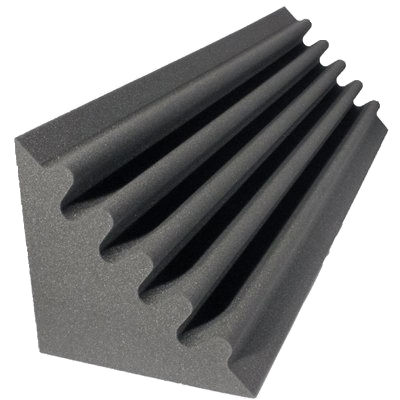
battery – a device consisting of one or more cells that produce a direct current by converting chemical energy to electrical energy and that is used as a source of power.
battle axe – slang for a trumpet. Also spelled battle-axe, battle ax, or battle-ax.
baud (Bd) – a unit for measuring the speed of digital data transmission, roughly equal to one bit per second. Technically, it is the unit for modulation rate in pulses per second. The baud has essentially been replaced by the term bits per second (bps). It is named for Émile Baudot, the inventor of the Baudot code for telegraphy.
Baxandall shelving curve – a shelving curve named after Peter Baxandall which has a gently rising or falling slope at the set frequency as compared to the traditional shelving equalizer, which has a steep rise or fall. Some engineers prefer this type of curve in some applications because it sounds more natural.
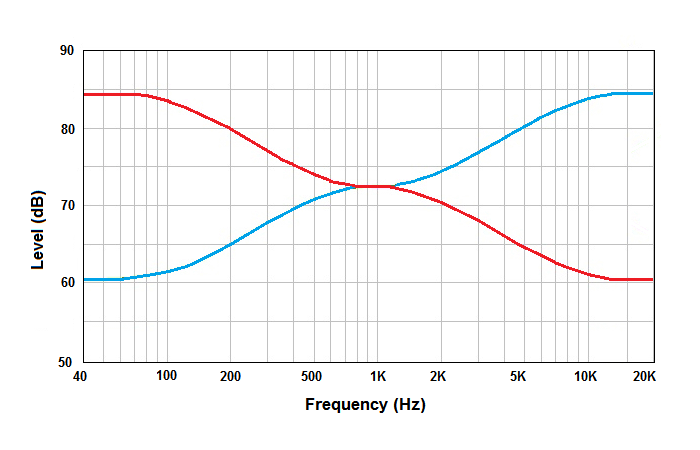
Baxandall tone controls – a type of active bass and treble tone controls designed by British engineer Peter Baxandall, which has very low harmonic distortion due to negative feedback in the the circuits. It is one of the most commonly used circuits for tone controls.
BBC – British Broadcasting Corporation. An international public broadcasting service operated by the British government and headquartered in London, UK. It is the oldest national broadcasting organization in the world and has the largest number of employees of any national broadcaster. It is funded primarily by an annual television license fee paid by all British households, companies, and organizations that receive live television broadcasts. It provides extensive radio, television, and online services to the UK and other countries in 28 languages.
BBC dip – see Gundry dip.
BBD – Bucket-Brigade Delay or Bucket-Brigade Device.
BCC– Binaural Cue Coding.
B-chain – the section of movie sound reproduction systems in theaters that follows the A-chain consisting of amplifiers, crossovers, and loudspeakers.
B curve – see B-weighting.
beam angle – the angle at which light is emitted from a source. Because it is difficult to define the point at which a light beam ends, the beam angle is usually defined as the angle between the where the light is at half maximum (50% intensity).
beam antenaa – see directional antenna.
beamforming – using a combination of speaker design and signal processing to adjust the sound dispersion characteristics of a speaker array to conform to the room conditions, avoiding undesired reflections and providing even coverage to all areas of audience areas. This process improves speech intelligibility and sound definition. Also called spatial filtering, beam steering, or sound steering.
beamwidth – the angle in degrees over which a directional antenna will provide a gain within 3 dB of maximum gain, or the angle over which the relative power is at or above 50% (-3 dB) of the peak power. Also called half-power beamwidth.
beat – (1) The main accent, pulse, or rhythmic unit in music. The length of beat (or more correctly, the time between beats or the length of a quarter note in 4/4 time) can be calulated using the formula t = 60,000/bpm, where t is length of a beat in milliseconds (ms) and bpm is the tempo in beats per minute. (2) A sound wave created by the combination of two sound waves of similar but slightly different frequencies. The frequency of the beat so created (the beat frequency) indicates how far apart the two waves are and can be used to tune an instrument to the correct frequency.
beat displacement – a drumming technique in which beats are moved forward a small amount, such as an eighth note, to creates rhythmic variations.
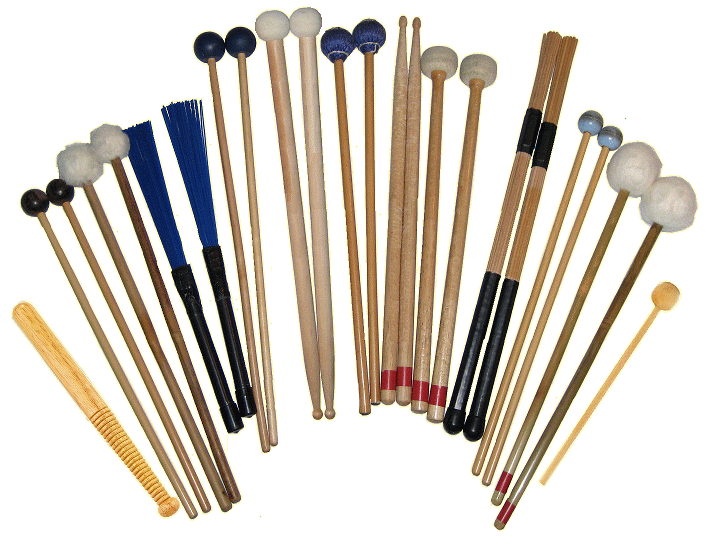
(Mallets & Sticks)
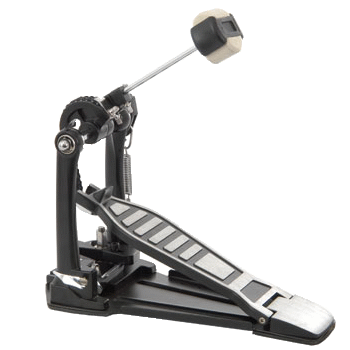
Kick Drum Beater
beater – a device used to hit or beat a percussion instrument to produce its sound. The term beater is more general than mallet, which refers to a device that is normally held in the hand while beater can be either hand-held or foot-operated. For example, the device that strikes the head of a kick drum is called a beater and consists of a shaft that attaches to a pedal and a round knob or head, which can be made of wood, rubber, felt, metal, resin, or plastic. Different materials are chosen to produce different sounds. The names of some mallets are specific to a given instrument. Others are used on many different instruments. A vibraphone is played with a beater simply called a mallet. Drumsticks and other sticks are used on a variety of instruments. The device used to play a triangle is called a wand. A rute is used to play a bass drum as well as other instruments. Brushes are used primarily on a snare drum, but on other instruments as well. A xylophone is played with a hammer, but is sometimes called just a mallet.
beat frequency – the frequency of a sound wave created by the combination of two sound waves of similar but slightly different frequencies. The beat frequency is the difference in frequency of the two waves. The human ear often will perceive it as a third tone, called a difference tone, subjective tone, or resultant tone. If the beat frequencyis less than 20 Hz, it will be perceived as beating.
beating – the phenomenon that occurs when a sound wave is created by the combination of two sound waves differing by a frequency of less than 20 Hz. The frequency of the beating is the beat frequency.
beat mapping – the process in a DAW of adjusting the tempo variations in an audio file to fit the desired tempo by synchronizing the transients to the appropriate tempo markers.
beat slicing – the process of using software programs or plug-ins to separate the various drumhits in an audio file of a drum recording.
beats per minute (bpm) – the tempo of a song as defined by the number of steady pulses (beats) occurring in one minute.
Behringer – an audio equipment company founded in Willich, Germany, by Uli Behringer in 1989. Although originally a German manufacturer, the company now produces its products in Zhongshan, China. It is owned by the holding company MUSIC.
bel – a logarithmic unit used to express the ratio between two values of power or intensity. One bel equals 10 decibels (dB). Named for Alexander Graham Bell.
bell – the center, concave part of a cymbal that has a distinctive ring. Also called a dome or cup.
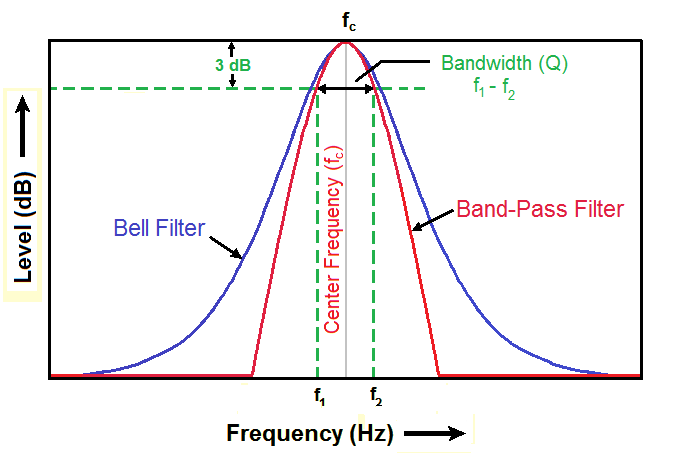
bell filter – a type of filter that basically follows the familiar bell curve. They allows the adjustment of level, center frequency, and Q. Although similar to a bandpass filter, they are sligtly different, though often used interchangeably. Sometimes called a haystack filter.
Bell Laboratories – the research and development division of Alcatel-Lucent. Previously it was a division of the American Telephone & Telegraph Company (AT&T). Headquartered at Murray Hill, New Jersey, Bell Laboratories has facilities throughout the world, developing products related to telecommunications. Its researchers are credited with inventing and developing many products and systems including the transistor, the laser, the charge-coupled device (CCD), and several computer programming languages. It is called Bell Labs for short.
Bell Telephone Company – a company founded in Boston, Massachusetts, in 1877, by Alexander Graham Bell's father-in-law, Gardiner Greene Hubbard, who also helped found the New England Telephone and Telegraph Company. The Bell Telephone Company was started on the basis of holding Bell's patent for the telephone. These two companies soon merged into the National Bell Telephone Company. Additional mergers led to the formation of the American Bell Telephone Company. The American Telephone & Telegraph Company (AT&T) was incorporated in 1880 as American Bell's long distance division. At the end of 1899, American Bell transferred its ownership to its subsidiary, AT&T, and became known as the Bell System. AT&T went on to become the world's largest telephone company. In 1974. the US Supreme Court ruled that AT&T was a monopoly and ordered its breakup into seven Regional Bell Operating Companies, which was accomplished in 1984. In 2005, AT&T was purchased by one of the regional companies, SBC Communications. SBC then rebranded itself as AT&T, Inc. AT&T Corporation is now the long distance subsidiary of AT&T, Inc.
belt drive – (1) A mechanism in which power is transmitted by means of a continuous flexible belt, similar to a fan belt in a car. Belt drives are sometimes used in turntables and tape decks to provide mechanical isolation between the motor and the record or magnetic tape, where vibrations might otherwise affect the signal. (2) A mechanism on a kick drum that uses a belt to connect the foot pedal with the beater, as opposed to chain drive.
bend – (1) A technique used on stringed instruments, especially guitars, achieved by playing a string and then pushing the string up with the finger to create a change in pitch. If the string is bent up a half step (equal to one fret on a guitar), it is called a half bend. If bent a whole step (equal to two frets), it is a full bend. Bending also can be accomplished with a tremolo bar. Also called a string bend. (2) A pitch bend.
bend depth – the amount of change in pitch that can be achieved when the pitch-bend controller is moved to its maximum position.
BER– Bit Error Rate or Bit Error Ratio.
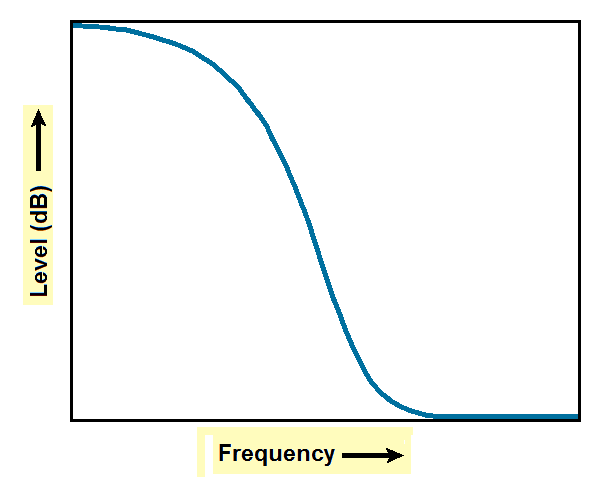
Bessel filter – a type of filter with a very flat linear phase response, which preserves the wave shape of the signal in the passband. Bessel filters do not have as flat of response as Butterworth filters, but have better transient response. Bessel filters are often used in audio crossovers. It is named for German mathematician Friedrich Bessel, who developed the mathematical functions upon which the filter is based. Sometimes called Bessel-Thomson filter for W. E. Thomson, who firrst applied Bessel functions to this filter design.
Beta – short for Betamax.
Betacam – (1) A professional video format using ½-inch magnetic tape in a videocassettes developed by Sony in 1982. Originally for analog video, it later was developed for digital video. (2) The camcorder used with the Betacam system. (3) The videocassette used with the Betacam system. (4) The video recorder used with the Betacam system.
Beta HiFi – an improved audio system for the Betamax format of VCR, introduced by Sony in 1983. Beta HiFi provided higher quality audio than that on the linear audio track (frequency response of 20 Hz to 20 kHz, a 70-dB signal-to-noise ratio, and a dynamic range of 90 dB), by placing a pair of FM carriers between the chroma (C) and luminance (Y) carriers. Although Sony was confident that VHS could not achieve the same audio performance as Beta Hi-Fi, JVC introduced a VHS HiFi system about a year later. Although Beta HiFi and VHS HiFi were promoted as having “CD sound quality,” they both suffered from “carrier buzz,” the bleeding of high frequency information into the audio carriers, creating momentary buzzing and other audio flaws. Both formats also suffered from interchange problems, where tapes recorded on one machine did not always play back well on another machines. Such flaws often would cause users to revert to the old linear soundtrack.
Betamax™ – a trademark of Sony for its format of videocassette recorder.
beta version – a version of software made available for testing, usually by a limited number of users in real-world situations, before its official release. An alpha version (also called a preview version) is usually the first complete version of a program and is used to demonstrate what the software can do, but it is likely to have bugs and be unstable.
bext – Broadcast Extension. The metadata code (called a chunk) in the file header of a broadcast wave file (BWF), which defines it as a BWF rather than a regular WAV file. Because the only difference between these formats is the extended information in the file header, a BWF does not require a special player for playback.
Bextrene – the commercial name for high-impact polystyrene sheeting (HIPS), a lightweight synthetic plastic, a copolymer of styrene and butadiene. It is sometimes used a a material for making speaker cones. Also called high impact plastic.
beyerdynamic GmbH & Co. KG – a family-owned company located in Heilbronn, Germany, that manufactures microphones, headphones, wireless microphones, and other audio equipment. Elektrotechnische Fabrik Eugen Beyer was founded in Berlin in 1924 by Eugen Beyer to produce loudspeakers for movie theaters. In the 1930s, Beyer began producing microphones and dynamic headphones. In 1939, the M 19, the first dynanic microphone for studio use, was introduced. The manufacturing facilities were destroyed during World War II. In 1948, Beyer relocated to its present location in Heilbronn, Germany, north of Stuttgart. In the 1950s, it changed the name to beyerdynamic. Beyer, who was a good friend of Georg Neumann, made an informal agreement between the two, so that each company would concentrate on different aspects of microphone design. Neumann worked on condenser microphones while Beyer specialized in dynamic and ribbon microphones.

and M 160 (R)
beyerdynamic M 130 and M 160 – two ribbon microphone developed by beyerdynamic in 1957, one with a hypercardioid pattern (M 160), and the other having a figure-8 pattern (M 130). These microphones contained dual-ribbon aluminum elements suspended between neodymium magnets. The M 160 went on to become a classic recording studio microphone, still in production after more than six decades.
B filter – see B-weighting.
B-format – (1) The output of many commercial tetrahedron microphones. It is essentially a three-dimensional extension of the mid/side (M/S) stereo technique, which adds difference channels for height and depth. It has four channels, which behave like 3 figure-eight microphones plus one omnidirectional channel. Typically the microphone produces four signals, called an A-format that must be processed using software or hardware into a second set of signals called the B-Format. It is part of the Ambisonics surround-sound technology, but is not exclusive to it. To be played, a B-format file needs to be decoded by an Ambisonic decoder, into various speaker feeds. (2) The format for type B videotape.
BG – abbreviation for BackGround. See background noise, background music, backing vocals and walla.
BGV – BackGround Vocals.
biamplification – the process of driving a woofer and tweeter in a speaker system each with a separate power amplifier. Bi-amplification optimizes the efficiency of the speaker system. Also called biamping.
biamping – see biamplification.
bias – see tape bias or bias voltage or grid bias.
bias beat – a high-frequency tone that occurs when two tape recorders are synched to simultaneously record the same signal and there is a difference in their bias frequencies. This problem can be solved by adjusting the bias frequencies to match, an adjustment available on some machines.
bias frequency – the frequency of the tape bias tone, typically between 40 kHz to 150 kHz, added to the audio signal of an analog tape recorder to reduce noise and distortion.
bias-induced noise – see tape noise.
bias-modulated tremolo – a method often used in guitar amps to create tremolo. Tremolo is created by modulating the bias of a vacuum tube. This type of tremelo produces a lush, warm, and symmetrical pulsing effect. Also called bias wiggle. See also optical tremolo.
bias noise – the increase in noise exhibited by a tape machine when the bias oscillator is turned on. This noise can be traced to several causes, such as harmonic distortion in the bias oscillator, magnetized heads, the earth's magnetic field, and intrinsic noise.
bias oscillator – the device (oscillator) in a tape machine that creates a tape bias signal.
bias voltage – a fixed dc voltage that establishes the proper operating conditions in electronic components.
bias wiggle – see bias-modulated tremolo.
bidirectional microphone – a microphone with a bidirectional pattern. Sometimes spelled bi-directional microphone. Also called a figure-eight microphone or figure-of-eight microphone.

(Figure 8 Pattern)
bidirectional pattern – a microphone pickup pattern with maximum pickup in the front and back with lower amounts on the sides. It is important to know that the front and back lobes of this pattern have opposite polarity. When air pressure goes up in the front the voltage goes up in the front, but down in the back. Also called a figure-eight pattern or figure-of-eight pattern. Sometimes spelled bi-drectional. See also polar pattern.
BIEM – Bureau International des Sociétés Gérant les Droits d'Enregistrement et de Reproduction Mécanique. An international organization representing 44 mechanical rights societies found in 42 countries. They administer the statutory license agreements of music, literature, and dramatic works, as well as the downloading of music via the Internet.
BIFS – Binary Format for Scene Description. See MPEG-4 Structured Audio.
big bass – see double bass.
bin – (1) A container (sometimes lined with a cloth bag) that is used arrange and hang film clips or sound clips. (2) A location for storing and organizing audio and video clips, plugin effects, and other objects in digital audio workstations (DAWs) and other audio and video editing software.
binary – (1) A system of numerical notation that uses 2 rather than 10 as a base. All digits in a binary system are either a 1 or a 0. (2) Pertaining to the binary system or binary notation.
binaural – (1) Pertaining to or used with two ears. (2) A binaural recording technique.
binaural audio – a method of reproducing sound through headphones that uses a specially encoded stereo file that delivers a full three-dimensional soundscape. It models the way sound reflects around the head and within the folds of the human ear. It is often recorded with microphones that mimics the size and shape of a human head. Sound is reproduced in every direction, but the audio does not respond to user input. So, if you move your head, the audio does not move accordingly. This is referred to as “head-locked” audio. (See VR audio.) Originally developed in stereo, it has been expanded to spatial audio.
binaural cue coding (BCC) – a method of audio coding, available in two renderings: fexible and natural. In flexible rendering the original multichannel input normally is downmixed to a single channel with the spatial information being encoded as a separate low bitrate stream. It can then be decoded into as many channels as are needed. The decoder can also apply Head Related Transfer Functions (HRTFs) to create surround sound using headphones. In natural rendering one stream of spatial information is created for each channel. While this increases the bitrate and limits the decoding options, it improves audio quality.
binaural panning – a process in Apple Logic Pro that emulates binaural hearing.
binaural recording – a method of recording sound using microphones to simulate the ears on a human head for playback through headphones. This process is entirely different from stereo recordings which are designed to create a sound image across a stage. See also binaural audio.
binder – the material that holds the magnetic coating together and that is applied to the base of a magnetic recording tape. Before application to the base, the magnetic coating is mixed with the binder, which consists of a copolymer of polyester and polyurethane, anti-friction agents, plasticizers, stabilizers, anti-oxidants, and mineral fillers.
binder breakdown – see sticky-shed syndrome.
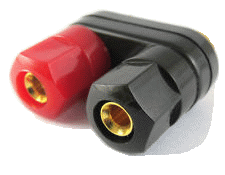
binding post – a rather versatile type of connector frequently used on power amplifiers and speaker cabinets, because it can accept banana plugs, alligator clips, and bare wire. Sometimes called a banana jack. See also 5-way binding post
BIP – Basic Imaging Profile. See Bluetooth profile.
bipolar junction transistor (BJT) – a type of transistor that uses both electron and hole charge carriers, in contrast to unipolar transistors, such as field-effect transistors, that only use one kind of charge carrier. BJTs use two junctions between n-type and p-type semiconductors. They are manufactured in two configurations, NPN and PNP. The function of a BJT is to amplify signals and they can be used as amplifiers or switches. Sometimes called a bipolar transistor.
birdies – (1) High-pitched whistling noises sounding like birds singing, in tape-recorded signals caused by the high-frequency content beating with the bias signal. (2) High-pitched whistling noises sounding like birds singing, caused by interference in AM radio reception. (3) High-pitched whistling noises sounding like birds singing, caused by artifacts created by some noise reduction systems. Sometimes called twittering.
bit – a binary digit, which can have a value of 0 or 1. Usually abbreviated as a lowercase “b” to distinguish bit from byte which uses an uppercase “B.”
bit architecture – see datapath width.
BITC – Burned-In TimeCode.
bit clock – a timing signal used for internal synchronization in digital audio devices. It is similar to word clock, but with a few differences. Also spelled bitclock. See also clock.
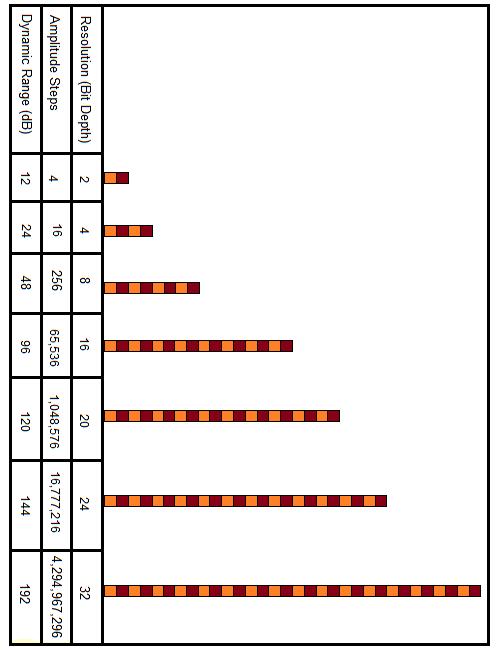
bit computing – see datapath width.
bit depth – the number of bits used to digitally represent an audio sample. Bit depth is an indication of the resolution of the amplitude. A higher bit depth represents the amplitude of the sample more accurately and has a greater dynamic range, which provides more headroom during recording. Originally, the bit depth of nearly all digital audio was 16 bits, because that was the bit depth for the compact disc format. Later, 24-bit and then 32-bit came into common usage in digital audio processing because of the improved headroom, even when the final product was to be 16-bit. Also called sample depth, bit width, bit resolution, and also inaccurately bit rate. Compare with bit rate.
bit error rate (BER) – (1) The ratio of the number of erroneous bits to the total number of bits transmitted, received, or processed for given time period. Also called bit error ratio. (2) The number of bits processed before an erroneous bit occurs. (3) The frequency of errors being transmitted, received, or processed.
bit error ratio (BER) – the same as Bit Error Rate.
bit mapping – a noise shaping process in which digital data is arranged so that data of a given bit depth can be can be encoded into data with a lower bit depth, while maintaining nearly the same quality. For example, Super Bit Mapping developed by Sony for CD mastering converts a 20-bit signal from a master recording into a 16-bit signal with almost no loss in sound quality.
bit rate – the number of bits (binary digits) of data that are transmitted or processed per unit of time, usually expressed in bits per second (bps) or kilobits per second (kbps). For digital audio bit rate can be calculated as sample rate × bit depth × the number of tracks (2 for stereo). For example, for a CD, bit rate equals 44,100 × 16 × 2 × = 1,411,200 bps or 1411.2 kbps. For compressed audio, the bit rate can be used to estimate the amount of compression. For example, an MP3 file at 128 kbps = 128/1411.2 = 0.09. So an MP3 at this bit rate uses about 9% of the space that the uncompressed file uses. Sometimes spelled bitrate. Compare with bit depth. See also bandwidth.
bit resolution – same as bit depth.
bit-sliced arithmetic coding (BSAC) – an MPEG-4 standard for scalable audio coding. BSAC is a noiseless alternative coding method for AAC, with the remaining processing being identical to AAC. Scalability provides a nearly transparent sound quality at 64 kbit/s and reduced degradation at lower bit rates. BSAC coding can operate in the range of 16 kbit/s to 64 kbit/s, but performs best in the range of 40 kbit/s to 64 kbit/s. Digital multimedia broadcasting (DMB) uses the AAC-BSAC codec.
bits per second (bps, b/s) – the unit used to measure data rates, equal to the number of bits transmitted or processed in one second.
bit splitting – a technique of breaking high-resolution audio into several tracks of lower resolution data for recording. There are several bit-splitting schemes in existence, but they are not compatible with one another.
bitstream – a stream of data in binary form. A time series or sequence of bits. Also spelled bit stream.
bit version – see datapath width.
bit width – same as bit depth.
BJT – Bipolar Junction Transistor.
black noise – (1) Silence. (2) Containing no random noise other than an occasional random spike. (3) Random noise with an energy density per unit of bandwidth proportional to 1/fβ, where β > 2, a formula used to model the frequency of natural disasters. (4) Random noise with an energy spectrum of blackbody radiation (thermal noise). See noise colors.
black-track print – the first corrected print of a film production, which is made from the A and B rolls, but without the soundtrack so that it is silent, usually because the post-production sound has not been completed. When the soundtrack is added, it is called an answer print.
blanketed – a descriptive term for a sound missing high frequencies, as if a blanket had been placed over the speakers. Similar to wooly.
blast – the rapid passage of air hitting a microphone diaphragm that sounds disproportionately louder than the rest of the recording. Blasts can be caused by microphones placed too close to instruments such as kick drums or by poor vocal microphone placement in live recordings. See also plosive.
BLE – Bluetooth Low Energy.
bleed – a condition in which the unwanted sounds of one track get into another track. Bleed can be caused by the inability to keep instruments or vocals separated when they are recorded “live” (at the same time). Another cause of bleeding is excessive headphone levels leaking into a microphone. Also called bleeding, leakage, spill, spillage, or crosstalk.
bleeding – bleed.
blending – (1) The mixing of two signals to produce what sounds like a single source or a single performance. (2) Slightly mixing left and right signals together to make an instrument sound closer to the center of the sound stage. (3) A technique of mixing in which tracks are not panned extremely left or right.
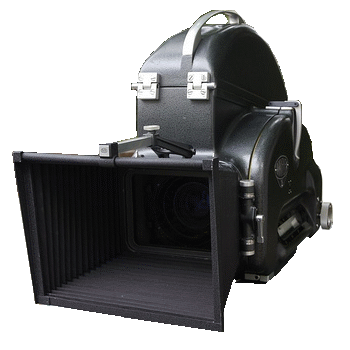
blimp – (1) A soundproof cover or housing for a camera designed to eliminate camera noise. Also called a sound blimp. (2) Another name for a zeppelin.
BLITS – Black and Lane Line Identification Tones for Surround. A test signal for 5.1 surround systems, devised by Martin Black and Keith Lane of Sky Brodadcasting and later adopted by the EBU. It consists of a sequence of tones, using the music notes A and E, at -18 dBFS on each channel in the AES channel format order (L, R, C, LFE, Ls, Rs), followed by an EBU-style ident tones only on the front left and right channels, with four interruptions on the left channel. These four interruptions provide a unique confirmation that a stereo or mono downmix came from a 5.1 source and avoids the possible confusion with stereo EBU or GLITS downmixes. The final BLITS tone sequence consists of a 2-kHz tone at -24 dBFS on all six channels to insure that any derived downmixes remain close to the -18 dBFS level. Another multichannel ident tone follows the format usually associated with the film industry that starts with the front left channel and continues clockwise through each additional channel. It uses a continuous 80-Hz tone in the LFE channel and a 1-kHz tone at -18 dBFS on all main channels with 500-ms pulses, separated from adjacent chanels by 500 ms of silence. There are other test tones for surround that use a variety of similar schemes and some addressing channel counts higher than 5.1.
bloated – a descriptive term for a sound with excessive upper bass frequencies (about 160 to 350 Hz). See tubby.
block – (1) An acoustic barrier. (2) To use an acoustic barrier to reduce airborne sound transmission.
bloom – a descriptive term for a sound with great dynamics, reverberation, and low-frequency response.
Blue Book – the specification for storage of digital data on a music compact disc. These specifications cover the format CD-Extra, also called CD-Plus and sometimes shown as CD+Extra and CD+Plus. See also Red Book, Yellow Book, White Book, Green Book, and Orange Book.
BLUE Microphones – audio production company, headquartered in Westlake Village, California, that designs and produces microphones, headphones, recording devices, signal processors, and music accessories for audio professionals and consumers. It was founded in 1995 by an American musician, Skipper Wise, and a Latvian recording engineer, Martins Saulespurens. The company name is an acronym for Baltic Latvian Universal Electronics. In 2008, BLUE Microphones was sold to private equity firm Transom Capital. In 2013, the Riverside Company acquired BLUE Microphones. In 2018, BLUE Microphones was purchased by Logitech.
blue noise – a random noise that increases at 3 dB per octave. Also called azure noise. See noise colors.
blues curl – see quarter-tone bend.
blues harp – see harmonica.
Bluetooth® – a short-range wireless technology used to communicate between devices using the 2.4-gigahertz radio band, the Industrial, Scientific and Medical (ISM) band. Bluetooth was originally developed as a low cost, low power, short-range communication system to replace cables on such devices as headsets for cell phones and laptop computers, but it has become a method for communicating with a large variety of devices such as printers and small home network. See also Bluetooth profile and Bluetooth protocols.
Bluetooth Audio Streaming – see Bluetooth profile.
Bluetooth BR/EDR – Bluetooth Basic Rate/Enhanced Data Rate.
Bluetooth Basic Rate/Enhanced Data Rate (BR/EDR) – Bluetooth Version 2.1. A version of Bluetooth that introduced new features that allow for easier connection between Bluetooth-enabled devices. It provides a menu that has “add Bluetooth device” to let devices automatically find and connect to each other. Basic Rate supports a bit rate of 1 Mbps while Enhanced Data Rate supports a bit rate of 2 Mb/s.
Bluetooth Classic – a term introduced to describe the original Bluetooth protocol after the introduction of Bluetooth LE.
Bluetooth clock – a 28-bit master clock in a Bluetooth controller used to control wireless communications in a piconet.
Bluetooth controller – a subsystem of the Bluetooth system consisting of the the radio, link control, and link manager protocol. It uses an optional standard interface, the Host to Controller Interface (HCI), that enables two-way communication with the Bluetooth host.
Bluetooth Dual-Mode – a Bluetooth version using dual-mode chipsets for devices, such as smart phones or tablets, that need to connect to both Bluetooth BR/EDR devices and Bluetooth LE devices.
Bluetooth-enabled – being able to communicate using Bluetooth technology. However, in order for two devices to communicate, the devices must use the same Bluetooth profile.
Bluetooth host – the main device, such as a computer, peripheral, cell phone, or network access point, to which another Bluetooth-enabled device pairs.
Bluetooth® LE – Bluetooth Low Energy.
Bluetooth® Low Energy (LE) – a version of Bluetooth that that allows for short bursts of long-range radio communications that saves energy. It is useful for applications that do not require a continuous connection, but need a long battery life.
Bluetooth profile – a standard that manufacturers must follow to allow Bluetooth-enabled devices to communicate wirelessly for a specific type of service. In order to communicate with another Bluetooth device, a device must be compatible with the Bluetooth profile required for that particular service. Some of these profiles include Advanced Audio Distribution Profile (A2DP), which allows multimedia audio to be streamed from one device to another (also called Bluetooth Audio Streaming), Audio/Video Remote Control Profile (AVRCP), Headset Profile (HSP), Hands-Free Profile (HFP), Basic Imaging Profile (BIP), designed for sending images between devices, Basic Printing Profile (BPP), used to send data to printers, Service Discovery Protocol (SDP), used to allow devices to discover what services each supports, and others. Not to be confused with Bluetooth protocols.
Bluetooth protocols – a standardized set of core rules and specifications that define how Bluetooth-enabled devices communicate with one another. Not to be confused with Bluetooth profiles, which specify the rules needed for a specific application.
Bluetooth SIG – see Bluetooth Special Interest Group.
Bluetooth Smart® – trade name for Bluetooth Low Energy.
Bluetooth Special Interest Group (Bluetooth SIG) – a not-for-profit trade organization headquartered n Kirkland, Washington,and founded in 1998 that manages Bluetooth standards and licenses Bluetooth technologies and trademarks to various manufacturers.
BLU link – a high speed digital audio bus developed by Harman Professional to provide audio connections between a variety of devices using standard CAT-5e cabling (although it is not Ethernet-based). The BLU link bus supports a total of 256 channels at 24 bits and 48kHz or 128 channels at 24 bits and 96kHz. Because it was designed originally for the BSS Audio platform, it is sometimes called BSS BLU link, but has since been adopted by several other manufacturers.
Blumlein array – a stereo microphone technique developed by Alan D. Blumlein. It falls into the coincident pair category of miking methods, and uses a pair of figure-eight (bi-directional) microphones placed at a common point and angled 90 degrees apart (45 degrees to the left and right of center). Also called a Blumlein pair, coincident figure-eights, or stereosonic technique. Other coincident pair techniques include mid-side and X-Y pair. See also near-coincident pair (A-B, DIN, EBS, Faulkner array, NOS, ORTF, RAI) and spaced pair (A-B, Decca tree, spaced cardioids, spaced omnis). See table comparing various stereo microphone techniques.
Blumlein shuffler – see shuffling.
Blu-ray™Disc – an optical disc the size of a compact disc for storing data, audio, and high-definition video, with a storage capacity more than 38 time that of a CD. Blu-ray is a trademark of Sony. Called BD for short.
blurred – (1) An unfocused sound with poor stereo imaging. (2) A descriptive term for a sound with poor transient response.
BMG – formerly Bertelsmann Music Group. An international music publishing company headquartered in Berlin, Germany, a wholly-owned subsidiary of the international media conglomerate Bertelsmann. BMG sold its music business to Sony Music Entertainment in 2008.
BMI – Broadcast Music International. BMI is one of three performance rights organizations in the US that protects the rights of artists and publishers and collects and distributes royalties to its members. The other two PROs are ASCAP and SESAC. See also Global Music Rights.
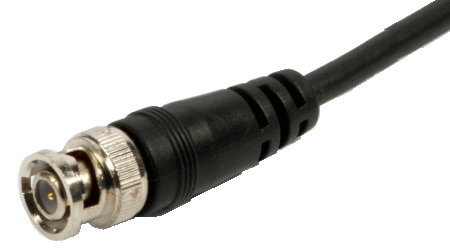
BMS/Chace – a company founded in 2002 and headquartered in Nashville, TN, that provides data management service and archival services to the entertainment industry, institutional archives, and libraries. It develops custom-tailored methods for metadata capture, archival migration, fail-safe preservation, and effective re-use of audio and video assets.
BNC – Bayonet-Nut Coupler. A twist-locking connector used with low-voltage, two-conductor coaxial cable typically used for connecting high-frequency clock signals. Sometimes called bayonet Neill-Concelman after its developers, Paul Neill and Carl Concelman.

T Connector
BNC T connector – a T-shaped connector used to connect three BNC-terminated cables. They function the same as Y-connectors used with other type of cables. BNC T connectors may be any combination of gender. Also called a BNC Tee connector or BNC T piece.
BNC Tee connector – see BNC T connector.
BNC T piece – see BNC T connector.
B&O – Bang & Olufsen.
board – (1) A slang term for the mixing console, which is used to control almost all the functions in a recording studio, such as level, panning, equalization, sends, and returns. (2) A slang term for a keyboard, although the term keys is more common. (3) Short for circuit board.
board mix – a recording made by running lines directly off a mixing console, especially at a live concert. Also called a board recording or board tape.
board recording – see board mix.
body – (1) A descriptive term for the frequency range in which an instrument produces its richest tone, typically between 800 Hz to 1 kHz. See also depth, definition #2. (2) The main section of a string instrument, such as a guitar, onto which the neck and bridge are attached. Acoustic guitar bodies are hollow and act as a sound resonator. Electric guitars are often solid-body because they are amplified and have less need for resonance, but the body still affects the timbre of the instrument.
bodypack – a device worn on the body containing a transmitter into which a microphone can be plugged.
BOH – Back of House. See front of house.
bolt-on neck – see neck joint.
Bonded Logic, Inc. – a company headquartered in Chandler, AZ, that markets and manufactures thermal and acoustical insulation products for a number of industries, providing products that have good environmental, health, and safety features. Their insulation is made from recycled textiles instead of fiberglass.
bonding – see pairing.
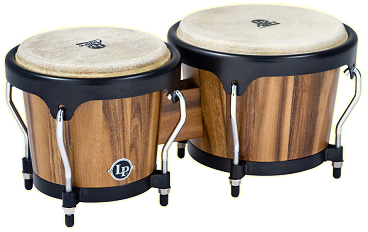
bongo drums – pair of small drums, with one slightly larger than the other, typically held between the knees and played with the fingers. Also called bongos.
bongos – see bongo drums.
bone – slang for a trombone.
bookshelf speaker – a small, compact loudspeaker, usually intended for consumer home audio applications. They are usually sold as stereo pairs and are small enough to be placed on a shelf or other raised surface. Also called a bookshelf loudspeaker.
boom – (1) A rod that holds a microphone mount and extends horizontally from the vertical part of a microphone stand. (2) A hand-held pole used by a boom operator to hold a microphone for recording dialog in film and video production.

and Operator
boom microphone – a microphone mounted or attached to a long pole or arm, used primarily in film and video for capturing the dialog of actors. Slang term is fishpole.
boom operator – the person on the sound crew who handles the boom microphone, primarily in film and video production. The boom operator is responsible for capturing the dialog of a scene and keeping the microphone from being visible by the camera.
boom stand – a microphone stand with a boom attachment, a rod that extends the microphone mount horizontally from the vertical upright portion of the stand. A boom stand allows you to place microphones in hard-to-reach areas.
boomy – a descriptive term for a sound with excessive bass response, especially at 125 Hz and below.
boost – (1) To increase in level, amplitude, or gain . (2) An increase in level, amplitude, or gain. Opposite of cut.
bootleg – a slang term meaning to produce and/or sell unauthorized merchandise. Merchandise that is typically bootlegged include recordings, DVDs, and artist promotional materials such as T-shirts. The term originates from the slang term for smuggling liquor by concealing a flask of booze in the leg of a high boot.
Bosch Communications Systems – see Robert Bosch GmbH.
Boss Corporation – a division of the Roland Corporation founded in 1973 that manufactures products related to effects processing for guitars and bass guitars, such as effects pedals, multieffects pedals, electronic tuners, and pedal boards, and more recently digital recorders, rhythm machines, and other electronic music equipment.
bottleneck – see slide.
bottleneck guitar – see slide guitar.
bottom – short for bottom end.
bottom end – the lower frequency range, around 250 Hz and below. Called bottom for short.
bounce – (1) To mix down two or more tracks on a tape recording into a blank track, allowing the mixed tracks to be erased, freeing them up for further use. Also called to ping-pong, bump, or jump. (2) To process one or more tracks including plug-ins and automation to a new track to free up processing power on a DAW. Sometimes called render. (3) To mix down a number of tracks on a DAW to one stereo track, often so that it can be transferred to a CD or other recording media for review. Sometimes called bounce to disc. (4) To consolidate several clips on a track into a single contiguous file. Other DAWs refer to this as consolidate, merge, glue, or render.
boundary – a physical obstruction to sound waves, such as a wall, table top, large solid object, or other sound-reflective surface. Also called a barrier. See also boundary effect.
boundary effect – a phenomenon caused by standing waves, in which sound levels increase as the waves terminate at the boundary (wall). As the wavefront approaches the wall, the amount of molecular motion begins to decrease while the pressure difference begins to increase as the wall resists the motion of the air molecules and the wall becomes a pressure node. The boundary effect is more prominent at at frequencies above 100 Hz in a typical room.
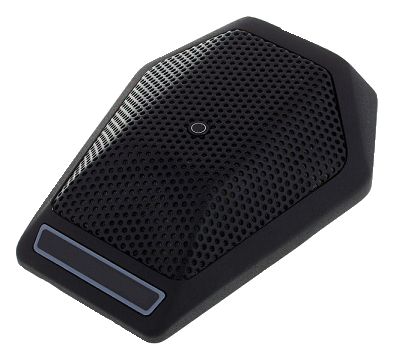
boundary microphone – a microphone designed to be used with its capsule very close to a boundary (reflective surface) in such a way that the direct and reflected sounds arrive at the capsule essentially in phase, so that the direct and reflected sounds add constructively, providing up to a 6-dB increase in sensitivity. Sometimes called a boundary layer microphone, Phase Coherent Cardioid® (PCC) microphone, or surface microphone. See also pressure zone microphone (PZM®) and barrier miking.
bout – the widest part of the body of a guitar at both the top (upper bout) and bottom section (lower bout). Measurements at these points are used to determine guitar styles and sizes. See diagram at guitar.
bow – (1) A flexible wooden stick strung with horsehair that is drawn across the strings of a stringed instrument to set them vibrating. (2) To draw such a device across the strings.
boxy – a descriptive term for a sound having too high of level in the 250 to 600 Hz frequency range, sounding as if the music were coming from a box.
boy soprano – see treble.
BPF – abbreviation for bandpass filter.
BPI – British Phonographic Industry.
BPL – Broadband over Power Lines.
bpm – Beats Per Minute.
BPO plug – see gauge B phone plug.
BPP – Basic Printing Profile. See Bluetooth profile.
bps – Bits Per Second..
Bps – abbreviation for bytes per second, distinguished from bits per second by using uppercase B.
bracketing – see frequency bracketing.
braided shield – a type of cable shield that consists of a mesh of braided strands of copper that surrounds the insulated center conductors of a cable. A braided shield provides improved RFI shielding while remaining fairly flexible, but at a higher cost and with less flexibility than other types of shielding. See also foil shield, spiral shield, double-spiral (Reussen) shield, and double-braided shield.
braked Leslie – using a Leslie speaker, in which neither the horn nor rotor are spinning, a technique that was sometimes used by Ray Charles.
brass – (1) instrument family of wind instruments made of a brass tubing of various lengths usually ending in a funnel-shaped bell and whose sound is made by the player blowing wind through vibrating lips pressed against a cup-shaped mouthpiece and often having valves or a slide that adjusts the effective length of the instrument. Brass instruments include the trumpet, trombone, cornet, French horn, euphonium, baritone horn, flugelhorn, sousaphone, tuba, and a few other exotic instruments. Although the saxophone is often made of brass, it is not a brass instrument, but rather a member of the woodwind family because it uses a reed to create its sound. (2) Those instruments in a band or orchestra consisting of brass instruments.
brass instruments – see brass.
brass section – the portion of a band or orchestra that plays brass instruments, especially trumpets, trombones, French horn, and tuba. Sometimes simply called brass. See also horns.
brassy – a descriptive term for a sound that too bright, often loud and unpleasant, similar to a trumpet being played too loud.
Brauerizing – a technique using multi-stage compression and other techniques developed by mix engineer Michael Brauer. This technique sends the audio signal into five stereo aux channels, which are summed to create the stereo mix. One chanel has no compression and the other four have compression with each being setup using test tones. Drums and bass are assigned to one channel, guitars to another, vocals to another, etc. The uncompressed channel is used for tracks that are already compressed. The technique is said to produce energy and excitement.
break – the section of a song used to connect two larger parts of music, in which the vocalist does not sing, providing the opportunity for an instrumental solo. Also called interlude or instrumental filler.
breakdown voltage – see Zener diode.
breaker – short for circuit breaker.
break frequency – see cutoff frequency.
break jack – see normalled connection.
breakout – to separate a bundle or group of items into their constituent parts.
breakout box – the point at which a bundle or group of items is separated into their constituent parts. For example, the point at which multiple channels of audio on an optical cable is separated into individual channels is a breakout box.
breathing – the undesirable audible rise and fall of background noise caused by overuse of a compressor. Also called pumping.
breathy – (1) Audible breathing sounds made with woodwinds, such as clarinets, flutes, or saxophones. (2) A descriptive term for a sound with a good response in the upper midrange and high frequencies.
Bricasti Design Ltd. – a small electronics company founded in 2004 and headquartered in Shirley, MA. It produces high-end hardware and software products, specializing in reverberation processors for professional and consumer use.
brickwall limiter – a limiter with a very high ratio (typically 100:1 or more) and a very fast attack time, that creates a hard ceiling (brick wall) on the signal level. The goal is to prevent the audio signal from exceeding the amplitude of the threshold. Brickwall limiters are commonly used to prevent clipping and to provide other types of overload protection. Brickwall limiting can be harsh and unpleasant sounding and should be used primarily as a safety device. Sometimes spelled brick wall limiter.
brickwall filter – a very sharp filter that eliminates any frequency beyond the cutoff frequency. For example, an analog-to-digital converter uses a brick-wall filter to prevent frequencies above the Nyquist frequency from being encoded by the converter. Sometimes spelled as brick-wall filter.

bridge – (1) Originally an eight-bar section of contrasting material in the middle of a song, but now applied to a linking section of any length, such as between the chorus and verse. A bridge typically occurs after the second verse. If it occurs before each chorus, it is considered a pre-chorus. Also called a bridge passage, middle eight, or B section. (2) To connect two outputs of an amplifier to effectively double the output power, such as connecting two stereo outputs together as one mono output. Also called bridged mono, bridge-tied load (BTL), or bridged transformerless. (3) A piece of wood or metal attached to the body of a stringed instrument, over which the strings pass and transmit the string vibrations to the soundboard of the instrument. See also saddle.
bridged mono – see bridge, definition #2.
bridged transformerless – see bridge, definition #2.
bridge passage – see bridge, definition #1.
bridge saddle – see saddle.
bridge-tied load (BTL) – see bridge, definition #2.
bridging – when the input of an audio device is connected to the output of another device without the second device appreciably loading the first device. Essentially no power is transferred, but the second device is sensitive to the output voltage of the first device, and this is maximized when the loading is minimized. Most audio connections are bridging, and the load impedance is at least ten times greater than the source impedance. The opposite of impedance matching.
bright – a descriptive term for a sound having emphasized high frequencies of 8 kHz and higher or strong harmonics relative to the fundamentals. The opposite of dark or brittle. Compare with crisp.
brightness – (1) The amount of high-frequency content in a sound, which tends to make the sound appear closer. The opposite of darkness. (2) The way light intensity is perceived by the human eye. Although brightness is often used interchangeably with luminance, these terms are different. Luminance is the light intensity as emitted by a light source.
BRIR – Binaural Room Impulse Response. An impulse response from a source position to the listener's left and right ears in an acoustic space, used to determine the reverberation characteristics of the space. See also DRIR.
British Academy of Songwriters, Composers, and Authors (BASCA) – a British organization that supports and protects the professional interests of songwriters, lyricists, and composers. Founded in 1947 as the Songwriters Protection Guild of Great Britain (SPGGB), it later became the Songwriters Guild of Great Britain (SGGB). In 1944, the Composers Guild of Great Britain (CGGB) was founded to represent classical and film composers. The Association of Professional Composers (APC) was founded in 1976 primarily to represent professional composers of film and TV music. In the 1990s these three organizations created an alliance named the Alliance of Composer Organisations (ACO), which merged in 1999 into the British Academy of Composers and Songwriters (BAC&S). In 2009, the Academy adopted the original name of British Academy of Songwriters, Composers, and Authors (BASCA).

BRIT Awards – the annual pop music awards presented by the British Phonographic Industry, and the equivalent of the American Grammy Awards. Originally the name was a shortened form of “British,” “Britain,” or “Britannia,” but it later became a backronym for British Record Industry Trust.
British EQ – a marketing term used to describe the equalizer circuits designed and built in England in the 1950s, 60s and 70s. The expression was coined to combat less expensive products being made at the time and to create a mystique about the British-made products.
British mode – see all-button mode.
British Phonographic Industry (BPI) – the trade association for British record industry.
British Tape Recorders (BTR) – reel-to-reel magnetic tape recorders initially made by EMI in Britain after World War II. They were the first magnetic tape machines to be manufactured in Britain, and their design was based on tape recorders made by the Germans during the war. The BTR1 was the first model made and was created in 1947. The BTR2, a mono machine, was introduced in 1952. It was used not only at EMI studios, but also at the BBC. The BTR3 recorder was originally designed to be either a 2- or 4-track machine, but only the 2-track (stereo) machines were produced as the 4-track design was discarded early on. Very few of the BTR3s were made and they were only used at Abbey Road Studios during the 1960s, where they were used for stereo recording and disc mastering. Because the BTRs were painted EMI green, they became known as the “Green Machines.”
brittle – a descriptive term for a sound having weak high frequencies or weak harmonics relative to the fundamentals; lacking roundness and fullness.
broadband – (1) A relatively wide range of frequencies. Also called a wideband. See also narrowband. (2) In telecommunications a medium that has a wide band of frequencies that enables simultaneous transmission of multiple signals and data types, such as audio, video, and/or data.
broadband absorber – an absorber or acoustic treatment that attenuates sounds over a wide frequency range.
broadband over power lines (BPL) – a method for sending computer signals using electrical wiring or power lines.
broadcast – (1) To transmit information or a program by radio or television to a large audience. (2) A radio or television program transmitted to a large audience.
broadcast engineer – a specialist skilled in the field of electrical engineering and computer engineering working in radio and television broadcasting. Broadcast engineers are also involved in audio engineering and radio frequency engineering, and are involved in both the studio and transmitter ends of the business, as well as remote broadcasts.
broadcaster – a person, organization, network, or station that transmits radio or television programs.
broadcast exchange format (BXF) – a SMPTE standard for data exchange in the broadcast industry. BXF was developed to replace the various archaic text conversion schemes that have developed over the years to interface, access, and transfer schedules, playlists, dubs lists, record lists, delete lists, and other data from business and automation systems in broadcasting. Version 1.0 was first published in 2008. BXF is based on XML. See also AAF and MXF.
broadcasting – (1) The process of transmitting speech, music, video, and other information by radio or television. (2) The business or profession of radio or television.
broadcast radio service (BRS) – see multichannel multipoint distribution service.
broadcast relay station – see broadcast translator.
broadcast translator – a transmitter that rebroadcasts (transponds) the signal of another radio or TV station, typically to an area not covered by the signal of the originating station. Translators are used to expand the broadcast range of a radio or television station beyond the signal coverage area of the primary station, used to improve service in a part of the coverage area that receives a poor signal because of geographic interference, or used by an AM or FM station to establish a presence on the other band. Also called a translator (US), rebroadcaster (Canada), complementary station (Mexico), broadcast relay station, satellite station, relay transmitter, or repeater.
broadcast wave format (BWF) – a version of the uncompressed WAVE audio format that is used as the recording format by non-linear digital recorders used in the movie, radio, and television industries. The specifications, which were introduced by the European Broadcasting Union (EBU) in 1997, include an extension of the metadata (see bext) to provide for the seamless exchange of audio between different computer platforms and applications. This metadata format provides for the identification of processing elements to allow synchronization with other recordings. Such files can have either the standard .wav extension or the .bwf extension. Sometimes abbreviated as BWAV. See also RF64 and AIFF.
broken chord – a chord played as a series of individual notes rather than simultaneously, such as an arpeggio.
broken up – slightly distorted, especially when describing an electric guitar amplifier.
B-roll – the supplemental or alternative footage intercut with the main shot (A-roll) in a film or video. Sometimes written as B roll.

broom – a type of drum beater, similar to brushes consisting of many small wood sticks bundled together, that produces a sound that is quieter than drumsticks. Sometimes called broom sticks.
broom sticks – see broom.
brown – a descriptive term for an extremely sought after tone by guitarists. It was the sound that Eddie Van Halen got from his guitar amp, typically having a boost in the low midrange of 200 to 400 Hz. It should not be confused with muddy.
brown noise – the kind of signal noise produced by Brownian motion. It is named for Robert Brown, who discovered Brownian motion. It is the same as red noise which is stronger at longer wavelengths (analogous to the red end of the visible spectrum. Also known as Brownian noise, red noise, or random walk noise. See noise colors.
brown out – a reduction or restriction in the availability of electric power.

Brownian motion – the random motion of particles suspended in a liquid or a gas, that results from the rapid collision of the atoms or molecules within the liquid or gas. The phenomenon is named for botanist Robert Brown, who discovered it in 1827.
Brownian noise – see brown noise.
BRS – Broadcast Radio Service. See multichannel multipoint distribution service.
brushes – a set of beaters, consisting of thin sticks attached to long wire bristles, used to make a soft hissing sound on drums or cymbals.
BS.1770 – see ITU-R BS.1770.
BSAC – Bit-Sliced Arithmetic Coding .
B section – see bridge.
B side – see A side.
BSI Group – the British standards organization responsible for producing standards and supplying standards-related services for the UK. It is known in the UK as the British Standards Institution (BSI).
BSS Audio – an electronics company specializing in audio networks and other devices, headquartered in Amsterdam. BSS Audio is a division of Harman Professional.
BSS BLU link – see BLU link.
B-taper – see taper.
BTL – Bridge-Tied Load. See bridge, definition #2.
BTSC – Broadcast Television Systems Committee. The FCC committee that created the MTS standards for stereo television sound in the US.
BTU – British Thermal Unit. A unit used to measure heat energy. It is used both to indicate the amount of energy in a fuel and the ability of heating and cooling systems to produce heating and cooling. It is defined as the amount of work needed to raise the temperature of one pound of water by one degree Fahrenheit. One BTU is equivalent to
1,055.06 joules and 3,412 BTUs is equivalent to 1 kilowatt-hour (kWh).
bucket-brigade delay (BBD) – a type of analog delay developed in 1969 by F. Sangster and K. Teer at the Philips Research Labs, which consisted of a series of capacitors where the first capacitor briefly retains an incoming signal before passing it on to the next capacitor. The analog signal is moved along the line of capacitors, one step at each clock cycle, analogous to a line of firefighters passing buckets of water. Most bucket-brigade delays have been replaced by digital signal processing. Analog-bucket brigade delays still are used in some guitar effects. Sometimes called a bucket-brigade device.
bucking – see phase cancellation..
buckling – the deformation of the circular form of a recording tape pack, caused by improper winding tension and/or poor storage conditions.
buffer – (1) A temporary storage place in a computer for data waiting to be sent to a device. It is used to compensate for differences in the rate of flow of data between various components in a computer system. (2) To temporarily store data that is being sent to a device. (3) A buffer amplifier.
buffer amplifier – a circuit that converts a signal from one impedance to another. There are two types of buffer amplifiers: the voltage buffer, which converts the signal from high impedance to low impedance, and the current buffer, which converts a signal from low impedance to high impedance. Also called a buffer circuit or simply a buffer.
buffer size – the amount of computer memory allotted to buffering. A smaller buffer size provides for lower latency, but setting the buffer size too low may not provide enough buffering to prevent audio glitches. Buffer size affects latency according to this formula: latency (ms) = buffer size (samples) / sample rate (kilosamples/sec). Most audio software allows buffer size to be set by the user.
bug – slang for a fault, problem, or trouble with electronic devices, connections, or computer programs. The term supposedly originated in the early days of computers when a problem was traced to a moth found inside the machine.
build – see pre-chorus.
bulk eraser – see bulk tape eraser.

bulk tape eraser – a powerful electromagnet used to erase an entire reel of recording tape without removing the tape from the reel. Also called a bulk eraser.
bull fiddle – see double bass.
bump – see bounce.
burned-in timecode (BITC) – on-screen timecode information that is burned into a video and visible so that humans can read it. Abbreviated as BITC and pronounced “bit-see.” Sometimes called visible time code or burnt-in timecode.
Burroughs Corporation – see Unisys.
burst noise – see popcorn noise.
burn – slang for to record onto an optical disc, such as a compact disc (CD), DVD, or Bluray disc (BD).
burnt-in timecode – see burned-in timecode.
bus – (1) A channel used to send analog or digital audio signals within a device or between devices. A bus takes the input from one or more sources and distributes them to one or more destinations, such as a group, submix, effects send, stereo mix, monitor, group fader, multitrack recorder, or the master fader. (2) A wire that carries signals from one place to another. (3) A group of tracks routed to a channel (bus) as a submix for processing. (4) To send a signal or group of signals to a channel within a device or between devices. Also spelled as the less-preferred buss.
bus bar – a long rod made of copper or other conducting metal for grounding multiple devices to a single point, typically used in mixers and consoles to provide a good ground source.
bus compression – applying a compressor to a bus or group of tracks. If compression is applied to the entire mix, it is usually called mix bus compression. Also spelled buss compression.
bus fader – a fader used to control the signal level of an audio bus or group of audio tracks in a DAW or mixer.
bus in – see bus input.
bus input – the connection or assignment going into a bus. Also called bus in.
bus master – a fader or volume control in the output section of a mixer or console that controls the output level of the bus.
bus out – see bus output.
bus output – the connection or assignment coming from a bus. Also called bus out.
bus powered – having power supplied to a device using the same connection that is used for transferring data. For example, a bus powered USB connection will supply power to a device without the need for separate power cord.
buss – a less preferred spelling of bus.
bus trim – a potentiometer on the output section of a mixer or console that controls the gain of a bus. It is used in conjunction with the bus master to provide fine adjustment.
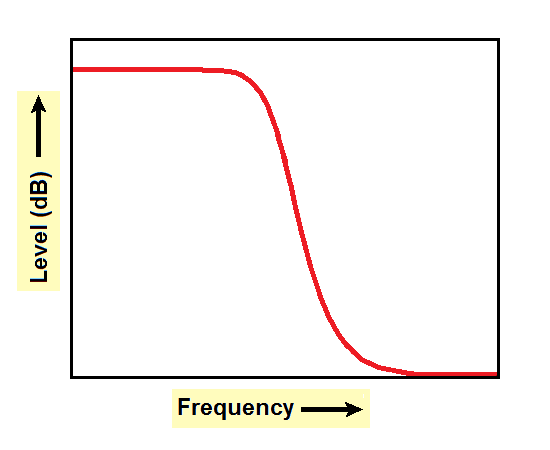
Butterworth filter – a type of filter with a very flat frequency response in the passband. Butterworth filters have a flatter response than a Bessel filters, but do not have as good a transient response. Butterworth filters do not have as steep roll-off slopes in the transition band as Chebyshev filters, but have more linear phase response characteristics. Named for British engineer and physicist Stephen Butterworth who first described it in a paper in 1930.
button microphone – see carbon microphone.
buzz – see hum.
buzz track – (1) A film soundtrack containing low ambient background noises, used to help prevent unnatural silence between dialog. Also called an ambience track. (2) A film soundtrack used to test and adjust the sound on a projector.
bvox – abbreviation for backing vocals.
b/w – short for backed with. See A side.
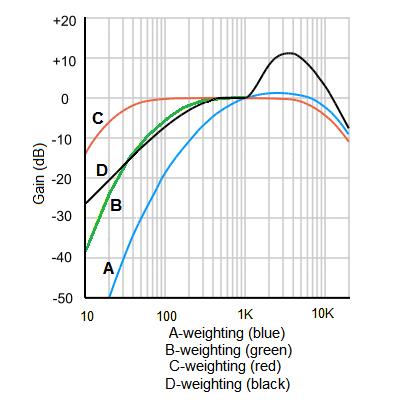
BWAV – an abbreviation for Broadcast Wave Format.
BWDM – Band Wavelength-Division Multiplexing. See wavelength-division multiplexing.
B-weighting – a method for measuring sound using an equalization curve with a response that simulates that of human hearing. B-weighting is based on the 70-phon equal-loudness curve developed by by Fletcher and Munson. Also called B-filter or B-curve. See also A-weighting, C-weighting, D-weighting, K-weighting, and Z-weighting.
BWF – Broadcast Wave Format.
BXF – Broadcast eXchange Format.
.bwf – file extension for the Broadcast Wave Format (BWF).
byte – a group of eight bits that make up a word and operate together as a unit. Usually abbreviated as an uppercase “B” to distinguish byte from bit which uses a lowercase “b.”
bypass – a switch that allows a signal to pass through an effects processor without processing the signal. Depending on the DAW, it may be either a regular bypass, in which case a signal still passes through the processing circuitry but the signal is unaffected by the processor, or a true bypass in which case the signal passes directly from the input to the output without passing through the effects circuitry. There is no latency in a true bypass, but not so for the regular bypass.
References
_________________
1. Whitlock, Bill, edited by Rod Elliott. “Design of High-Performance Balanced Audio Interfaces,” http://sound.westhost.com/articles/balanced-2.htm, accessed 4/25/2016.
Note: We believe this is the largest dictionary (glossary) of terms specific to usage within the recording industry that is currently available on the internet, with more than 8,800 entries, nearly 800 illustrations, and dozens of tables. Some of the terms have different or additional meanings in other situations, especially within the electronic, automotive, scientific, and computer industries. Of necessity there are obvious overlaps into other fields such as music, electronics, and computers, but such excursions are limited to information deemed pertinent to the knowledge required to operate and/or participate effectively in the workings of a recording studio. Also included are terms related to sound reinforcement (live performances) including wireless microphone technology because a working knowledge of that terminology is necessary for recording at live performance venues. Because recording studios also record audio for video and motion pictures (films), some terminology from those fields is included. Some scientific terms are included because they help explain studio terminology. For example, electromagnetism explains how microphones, loudspeakers, and guitar pickups work. Knowledge of radio waves and the radio frequency spectrum is needed to explain wireless devices. Any trademarks or trade names mentioned belong to their respective owners. The information contained in this dictionary is believed to be accurate at the time of publication. This information is subject to change without notice. The information was obtained from and cross-checked with a variety of sources that are believed to be reliable. However, Los Senderos Studio, LLC does not guarantee the accuracy or completeness of the information contained herein. Please contact us to report any errors, omissions, discrepancies, or broken links. Los Senderos Studio shall not be responsible for any consequences or damages arising out of the use of this information. Nothing in this glossary should be interpreted as legal advice. For a glossary providing information on legal and business matters for musicians, we suggest you consult Musicians Business Dictionary.
A note on alphabetical order: The terms in this glossary are alphabetical without regard to spaces and punctuation. For example, AM Radio follows amplitude. While this may seem to be at odds with other conventions, it eliminates confusion with words such as pickup, which is sometimes written as pick up or pick-up. In addition, all symbols such as &, -, or / are ignored. The entries on the number page (0-9) are listed in increasing value within each digit. For example, all of the entries beginning with 1 are listed before those starting with 2. For Greek letters (α-ω), the entries are in Greek alphabetical order.


